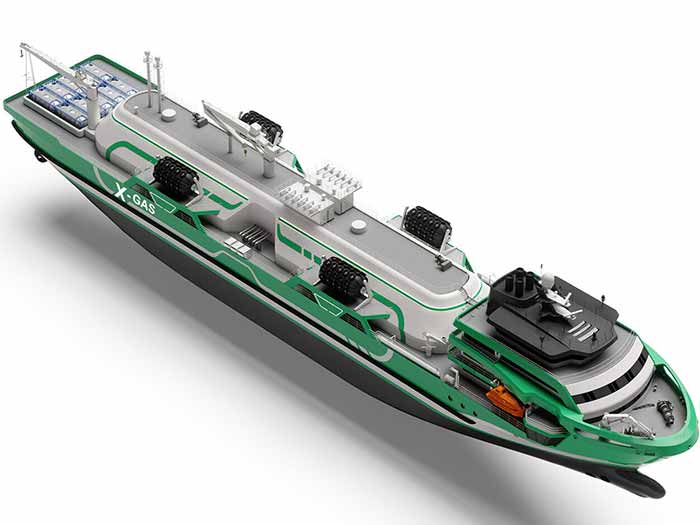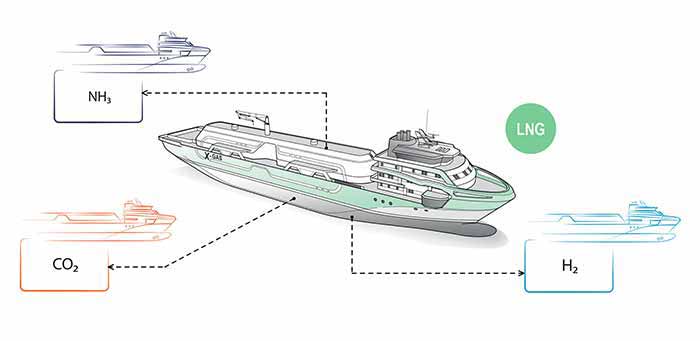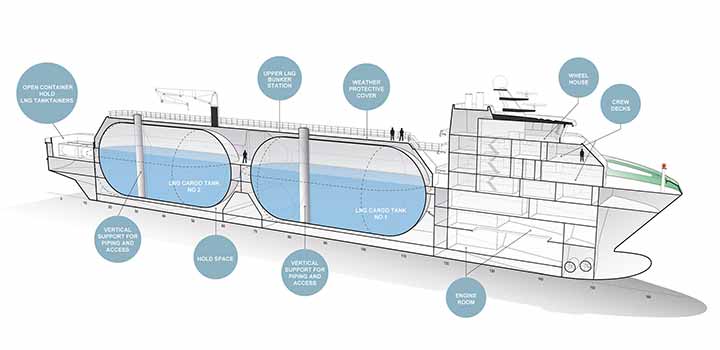
Innovative LNG bunkering tanker is adaptable to zero emissions fuels
Written by Nick Blenkey
A distinctive feature of the X-gas platform is a low-profile, forward deck house
Danish naval architectural consultancy Knud E. Hansen is launching the X-gas project, a series of liquified gas/gas bunkering vessels that provides a platform that could be expanded to handle zero emission fuels such as liquid and compressed hydrogen.

The flagship design of the project is a 126.5 meter vessel with a total cargo capacity of 9,000 cu.m, split between two Type C tanks. The highly customizable design can be tailored to accommodate a range of tank capacities, as well as various containment systems including membrane tanks.
A distinctive feature of the X-gas platform is a low-profile, forward deck house. This enables the vessel to safely approach and pull alongside cruise ships with low-hanging lifeboats. It also minimizes the need for ballast during cargo transfer, thereby lowering operational costs. Additionally, the forward deck house allows for larger cargo tanks without impeding bridge visibility.
For improved maneuvering and safety, the design features two propulsion thrusters aft and two bow thrusters, as well as an auto-docking system for alongside mooring.

The diesel electric power and propulsion plant consisting of one of the most fuel efficient dual-fuel, four-stroke engines available. Integrated with the propulsion plant is an Energy Storage System (ESS) with a lithium-ion battery bank that allows for engine load optimization with reduced methane slip. The batteries also provide all of the power required during cargo transfer, resulting in no emissions or exhaust in way of the ship being bunkered, an especially important feature for passenger vessels.
Boil-off gas from the cargo tanks is captured and consumed in the dual-fuel engines and the energy surplus generated can be stored in the batteries. Waste heat from the engine cooling water is converted to electric and thermal power through a number of Organic Rankine Cycle (ORC) waste heat units. In a novel approach, waste energy captured during operation can be stored in accumulators and released as required to drive an absorption chiller and reduce the electrical load onboard. This approach boosts energy efficiency to a very high level.
Another unique feature of the design is an aft “energy bay” that allows the vessel to provide containers loaded with fuel or stored electrical power to a receiving vessel. It also allows the vessel to provide fully charged battery banks to remote locations ashore, where current infrastructure does not allow sufficient power to be provided.
The principal particulars of the baseline vessel are as follows:
Length (overall) 126.5 meters
Breadth (molded) 20.5 meters
Design draft 5.25 meters
Service Speed 13 knots
Ice Class 1A
Deadweight 4,775 tonnes
LNG Capacity 9,000 cubic meters
Crew Capacity up to 16




